(This is the final daytrip in the San Francisco in 3 Days series.)
Our guest only listed two things she needed to see during her visit: Muir Woods and Napa Valley. This calls for a highly organized and planned day, beginning with Muir Woods in the early morning (the best time to avoid the crowds and be able to park within 6 miles of the park, no exaggeration). This is followed by Venezuelan street food for lunch, in Napa. And finally, the reason for it all: three carefully selected wineries to show your guest the incredible range of Napa Valley vineyards. First, Trefethen – a vineyard that is also a National Historic Site. Second, Beaulieu – a commercial and critical success…which is also owned by the same folks as Johnny Walker and Guiness. Third, Smith-Madrone – a sommelier’s darling up in the rustic and picturesque hills.
1. Drive to Muir Woods in Marin County
The first stop of the day is Muir Woods National Monument, just north of the city in Marin County. The park opens at 8am, and I heavily recommend getting there at opening or soon after. The small parking lot fills up quickly (it was full by 10am as we were leaving), and the park will post a sign that the lot is full and direct you to another parking lot…6 miles away at the exit ramp off Route 101. They run shuttle buses to and from the park.
Coincidentally, early morning is an ideal time to cross the Golden Gate Bridge. The early morning sun makes the bridge glow fiery, deep orange. The western sky is also a deeper blue in the morning, and the stark contrast is, well, familiar. This is when the photographers come out; this is what the bridge looks like in all those postcards for sale around the city.
Continue driving north on Route 101, and take exit 445B for Route 1/ Shoreline Highway/ Stinson Beach roughly 5 miles from the bridge. After the exit, you’ll come to a split in the road – veer left to stay on Shoreline Highway.
From here, stay on Shoreline Highway for the next 3.6 miles. The road is extremely topsy turvy, so it will feel much farther than that. When the road begins to straighten out for a bit, you’ll get to a sudden fork in the road, pointing left to stay on Route 1/ Shoreline Highway and pointing right for Panoramic Highway/Muir Woods. Veer right to drive on Panoramic Highway.
Drive on Panoramic Highway for 0.8 miles, and you will see a large wooden sign for Muir Woods. Veer left to turn onto Muir Woods Rd.
In 1.5 miles, you will see the entrance to the parking lot on your right. There are restrooms in the parking lot, to your left, as well as roughly a quarter mile inside the park.
2. Visit Muir Woods
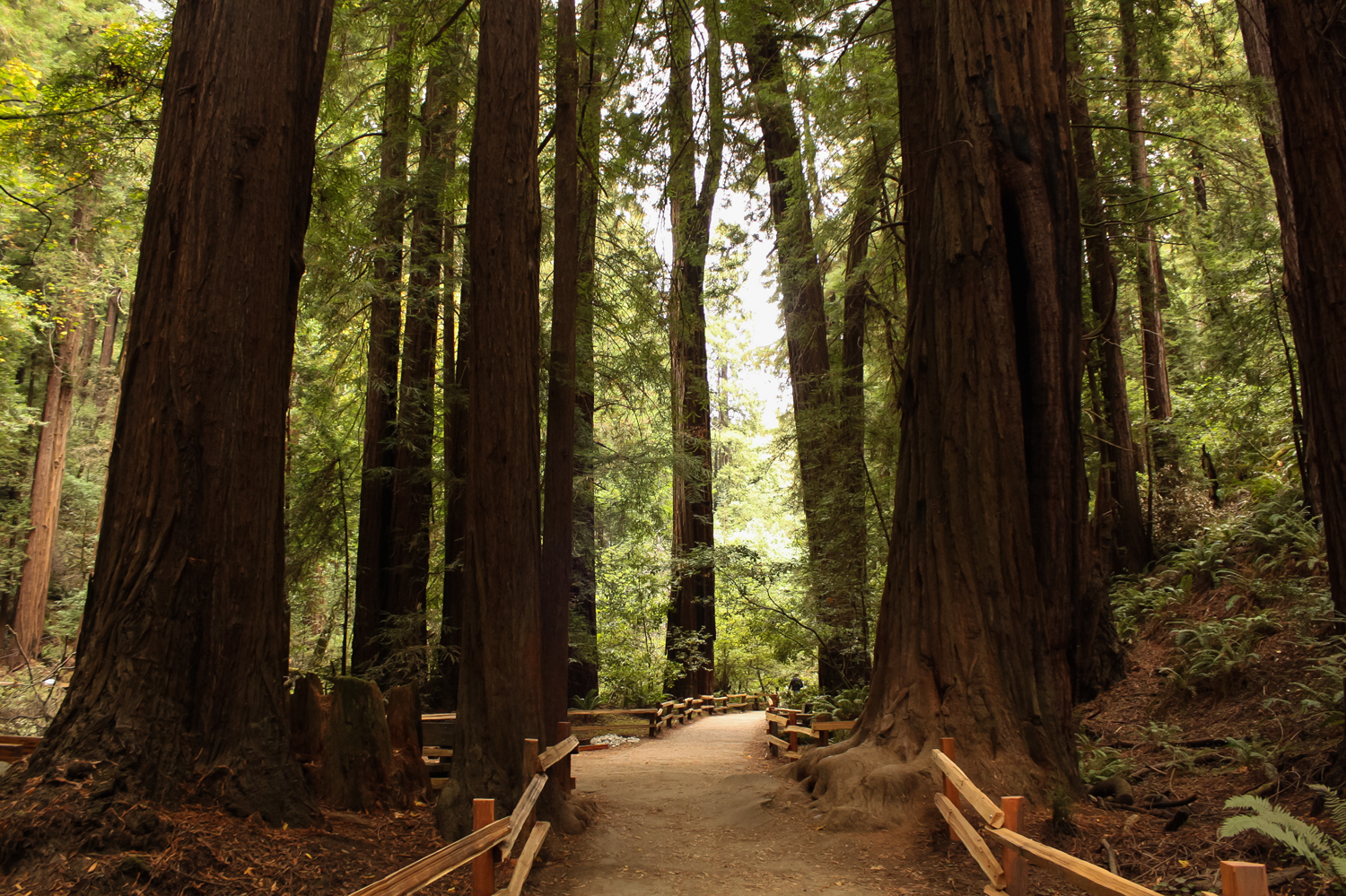
Muir Woods is spectacular and unforgettable, and not entirely well known to first time Bay Area visitors. On top of this, there are many misconceptions as to what it actually is and its history.
The coastal redwoods here are Sequoia sempervirens, and they comprise the tallest trees on Earth. The tallest in Muir Woods is 258 ft; the tallest tree in the world is 380 ft (Its precise location has never been disclosed in order to protect it; it is located somewhere in Redwood National Park in California.) Redwoods appear to be “skinny” due to their height, although they are actually quite large in diameter – the largest in California is 26 ft wide. The canopy is hundreds of feet off the forest floor, providing a dense cover that sunlight cannot penetrate. Other plants cannot survive with such limited sunlight, and this is what gives redwood forests their sparse, dark, cathedral-like atmosphere.
As for the misconceptions, these are not the fat and wide, house-like trees. Your guest may be thinking of Giant Sequoias (Sequoiadendron giganteum), which you’ll find in Sequoia National Forest and Yosemite National Park, both also in California.
Second, Muir Woods does not feature any drive-through trees, which are mostly located in the Avenue of the Giants in the northern part of the state. A famous one used to live in Yosemite (pdf), but apparently boring a car-sized tunnel into a tree isn’t ideal for the tree’s health, and so it was that the Wawona tree fell over in 1969 after a snowstorm. It is now an attraction called the “Fallen Tunnel Tree.” I shouldn’t find this as funny as I do.
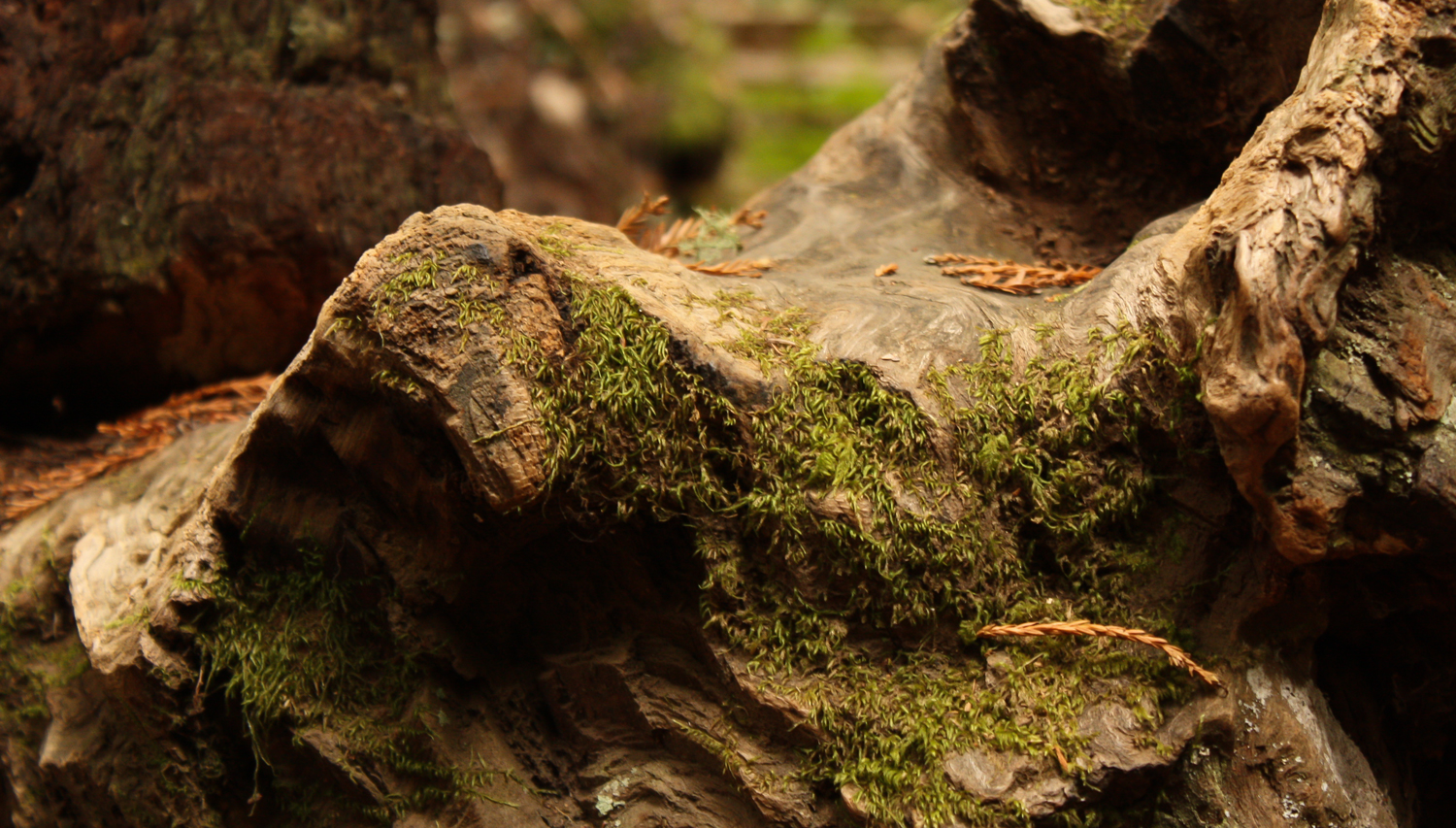
Finally, John Muir did not found the park or have anything to do with its founding; it was simply named after him. The park’s founders were Congressman William Kent and his wife, Elizabeth. They purchased the land in 1905 to protect the redwoods from loggers. They then donated half of it to the federal government, and President Theodore Roosevelt declared the site a national monument. Congressman Kent suggested that the site be named after John Muir, for his work on conserving California’s forests. John Muir did help found Yosemite and Sequoia National Park in addition to the Sierra Club.
If there are any American history buffs out there, Congressman Kent sent a remarkable letter to President Roosevelt arguing that the site should not be named after him:
Your kind suggestion of a change of name is not one that I can accept. So many millions of better people have died forgotten, that to stencil one’s own name on a benefaction, seems to carry with it an implication of mandate immortality, as being something purchasable. I have five good, husky boys that I am trying to bring up to a knowledge of democracy …. If these boys cannot keep the name of Kent alive, I am willing it should be forgotten.
President Roosevelt agreed, adding that he was also trying to groom his own four sons to do something worthwhile.
And, now, back to our trip to Muir Woods. You’ll be happy to know that the paths here are entirely built of paved ground and wooden platforms – you need not do any actual hiking, and it is wheelchair accessible. (There are much more ambitious 4 to 6 mile hiking paths for those out there wishing to take on the challenge.) We took an hour to walk the Main Trail Loop, which takes you to Cathedral Drove and back. There are restrooms, next to a snack bar and gift shop, about a quarter mile into the park.
The trail, weaving through the natural pillars, is awe-inspiring and serene. You’ll feel awkward speaking above a hush, as if you’ve just entered Notre Dame Cathedral itself. The information signs are very helpful, often answering a question just as you’ve thought of it. Take your time, breath in that wonderful, sweet redwood air, and the day resumes when you are back in your vehicle.
3. Drive along Pacific Coast Highway

As our guest had never been to the Bay Area before, we thought it would be a pity to go to Muir Woods and head back inland before taking a peak at Highway One. See, this stretch of coastal highway near Muir Woods may be the most spectacular stretch of the Pacific Coast Highway in all of California.
From the parking lot in Muir Woods, veer right. Drive along Muir Woods Road until you come to the juncture of Route 1. Turn right onto Route 1.
From the lush green valley of Muir Woods, you will quickly sweep up into a panoramic view of the ocean, driving along a steep cliff that plummets into the foamy crashing waves. Feel free to drive as slowly as you’d like here, using the turn-offs if any aggressive drivers come up behind you.
You’ll come to a turn that has a parking lot to your left. This is a good stopping point to stretch your legs a bit, calm your stomach, and take some photos. When your group is ready, get back in the car and turn around, heading back south on Route 1.
4. Eat lunch at Pica Pica Maize Kitchen, Oxbow Public Market in Napa
The timing of your day trip will necessarily depend on when you have scheduled your appointment with Smith-Madrone. Our appointment was for 3pm, which we found to be ideal. (However, if it will be your first stop of the day, you will likely drive north on Route 101, past Petaluma, and over the hills to Spring Mountain Rd. If this is the case, I heavily recommend stopping for lunch in Petaluma, and going to Graffiti – an unfortunate name for a fantastic, upscale lunch spot, with tables right on the water. The whole downtown Petaluma area is adorable, with antique shops, renovated old mills, and lots to see.)
To reach Napa, return to Route 101, driving north. In 26 miles, take exit 460A to hop onto Route 37. In 7 miles, turn left onto Route 121. After you pass the Sonoma Airport, you will need to take a right to continue on Route 121. Ten miles later, you will need to take a left to continue on Route 121.
To reach the Oxbow Public Market, take the “First St / Downtown Napa” exit. First St is a one-way street here, so you will drive briefly onto California St to get onto Second St. Drive for 1 mile on Second St. You will then drive through downtown Napa, and turn left onto Main St. Then, take a quick right onto First St. The market will be on your left.
The market sells a variety of local delicacies, but I recommend heading to Pica Pica Maize Kitchen, a Venezuelan street food restaurant. In this case, the street food is a variety of corn cakes, with a variety of fillings. We got the “maize’wich” which consisted of two sweet, grilled corn cakes with your choice of filling – vegetarian for me and pulled pork for my husband. My corn cake was stuffed with sweet plantains, avocado, black beans, and a spicy salsa. Each ingredient was so fresh and each sandwich was so colorful, we couldn’t wait to dig in. The sandwiches tasted even better than they looked, with a perfect combination of sweet, salty, and spicy. The kind of food that sends your eyes rolling back into your head as you scramble for another bite. Incredibly good. It is the perfect, heavy, and affordable meal to have before you go taste a lot of wine.
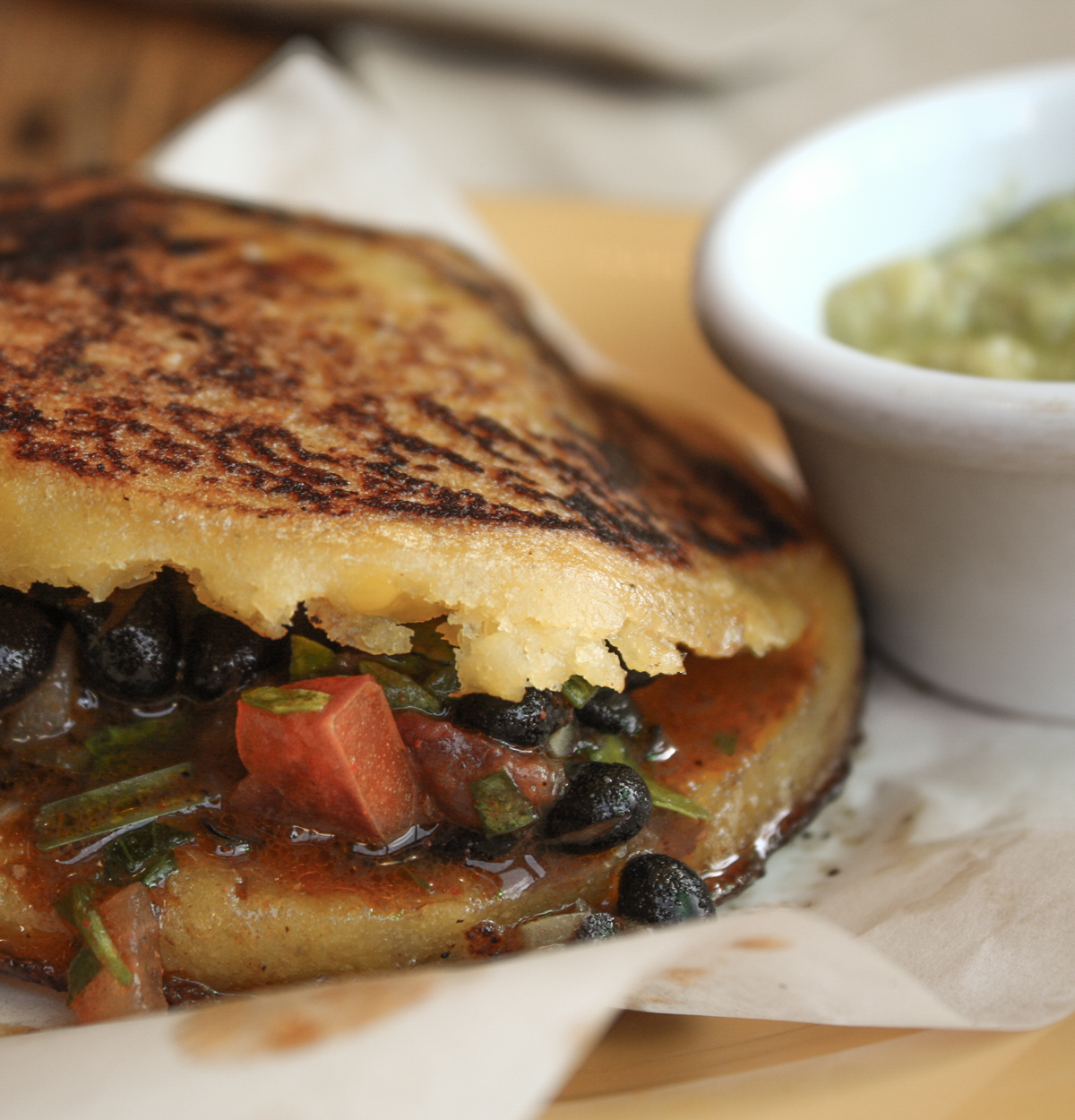
Now, before we get into the wine tasting, I want to disclose my process for whittling down the 450 wineries in Napa to the three that I recommend. First, full disclosure, I am much more a foodie than I am a wine expert. Actually, I’m probably far off to the right on the foodie spectrum, and somewhere in the middle of the bell curve on wine. My visitor is much more knowledgeable about wines, and said that she wanted to taste Cabernet Sauvignon, which is what Napa is known for.
Trying to pick wineries by reading wine articles is similar to trying to buy a Persian rug on Ebay without any photos. I squinted through many descriptions involving tannins and oak, and finally settled on a few sources that I trusted for their recommendations.
I cross listed the Napa Cabernet recommendations from the New York Times’ Eric Asimov with the Napa Cabernet recommendations from Food & Wine and pulled out all the wineries that do not offer tastings, due to strict Napa Valley land use codes. This resulted in a surprisingly short list — a large, classic winery (Trefethen) and a wine critic darling up in the Napa hills (Smith-Madrone). My husband recommended Beaulieu Vineyards for its excellent library selections, which he had tasted on a prior visit.
Since the wineries close early (4 to 4:30pm) and are typically 10-15 minutes away from each other, I recommend only visiting three wineries or four at most to ensure your day isn’t too rushed.
You will hopefully be finished with lunch by 1pm. It is now time to go to our first winery, which is closest to downtown Napa.
5. Tasting at Trefethen Family Vineyard in Napa
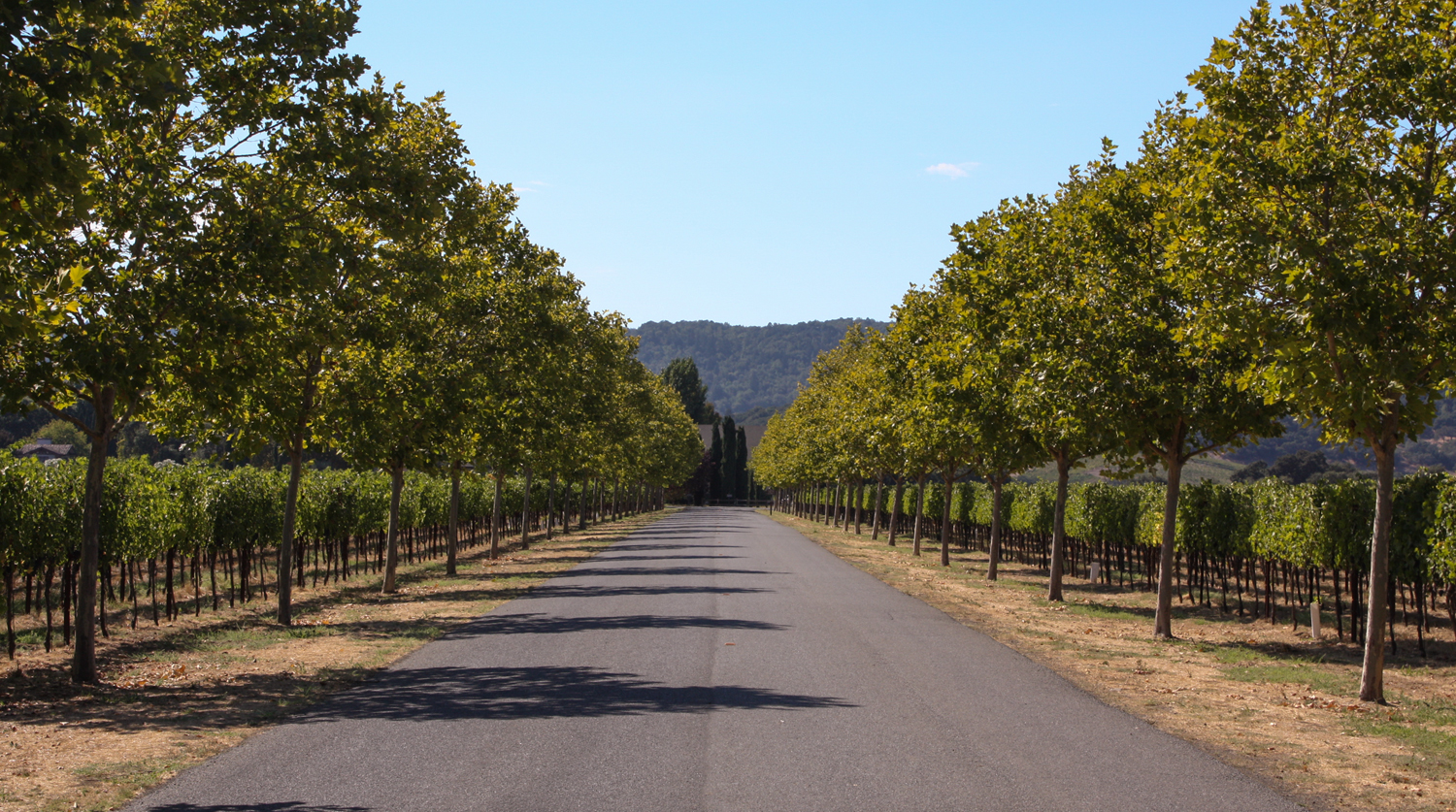
From Oxbow Public Market, take a right to go back onto First St. Head back towards St. Helena Highway, which you came in on. Get on St. Helena Highway, traveling North. Travel on St. Helena Highway for 4.5 miles. Turn right onto Oak Knoll Ave at the streetlight.
As soon as you turn off the highway, you’ll be greeted with classic Napa — a narrow, symmetric, tree-lined road with vineyards stretching in either direction as far as the eye can see, all leading to a “rustic” wooden building. Follow the signs to Trefethen. Drive slowly so you don’t miss the pretty signs letting you know what grape is growing in each stretch of vineyard.
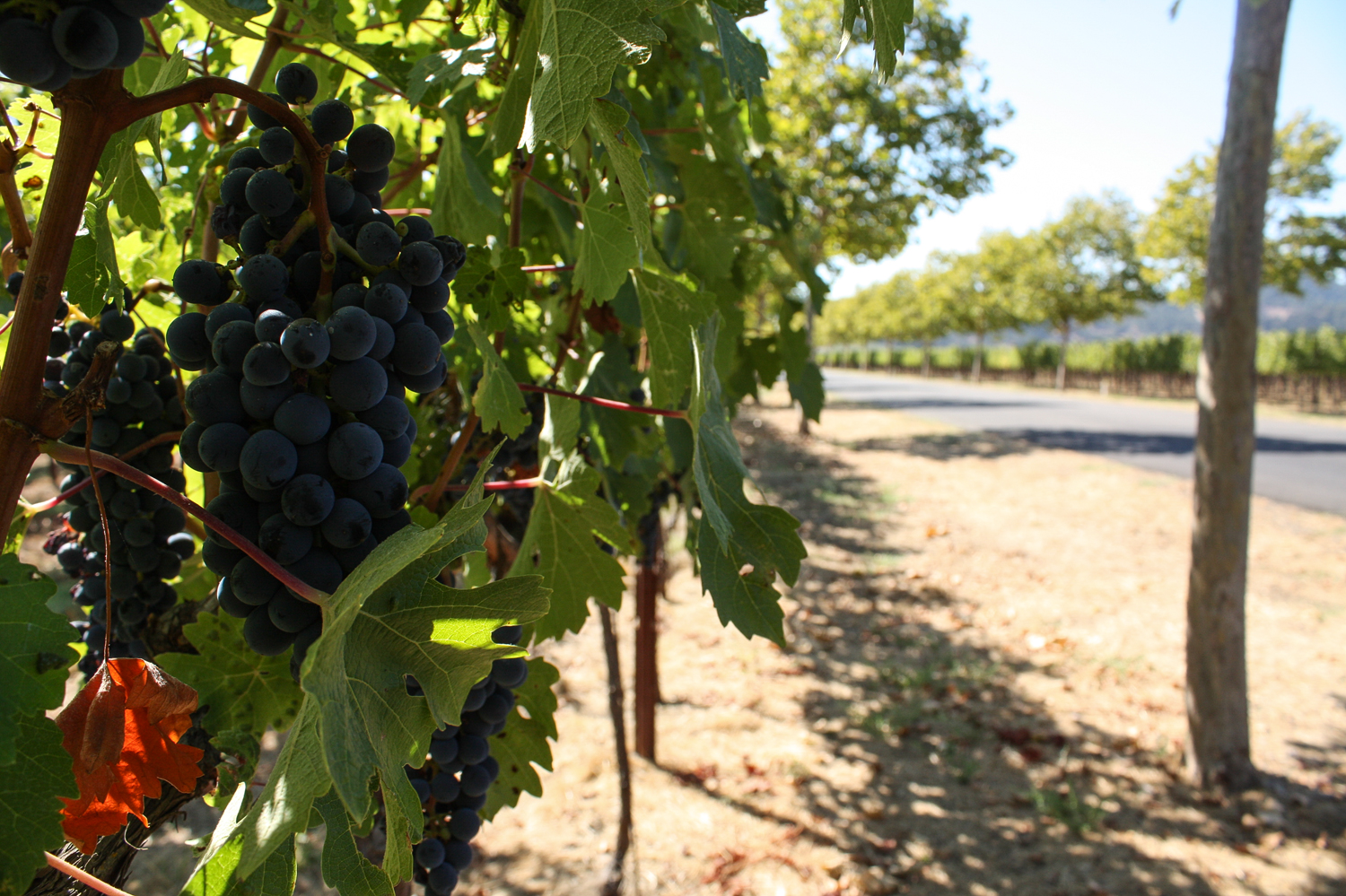
Inside, Trefethen looks like a very fancy wine cellar – dark, cool, and full of rustic wood and flowers. We opted for the slightly more expensive Cabernet tasting.
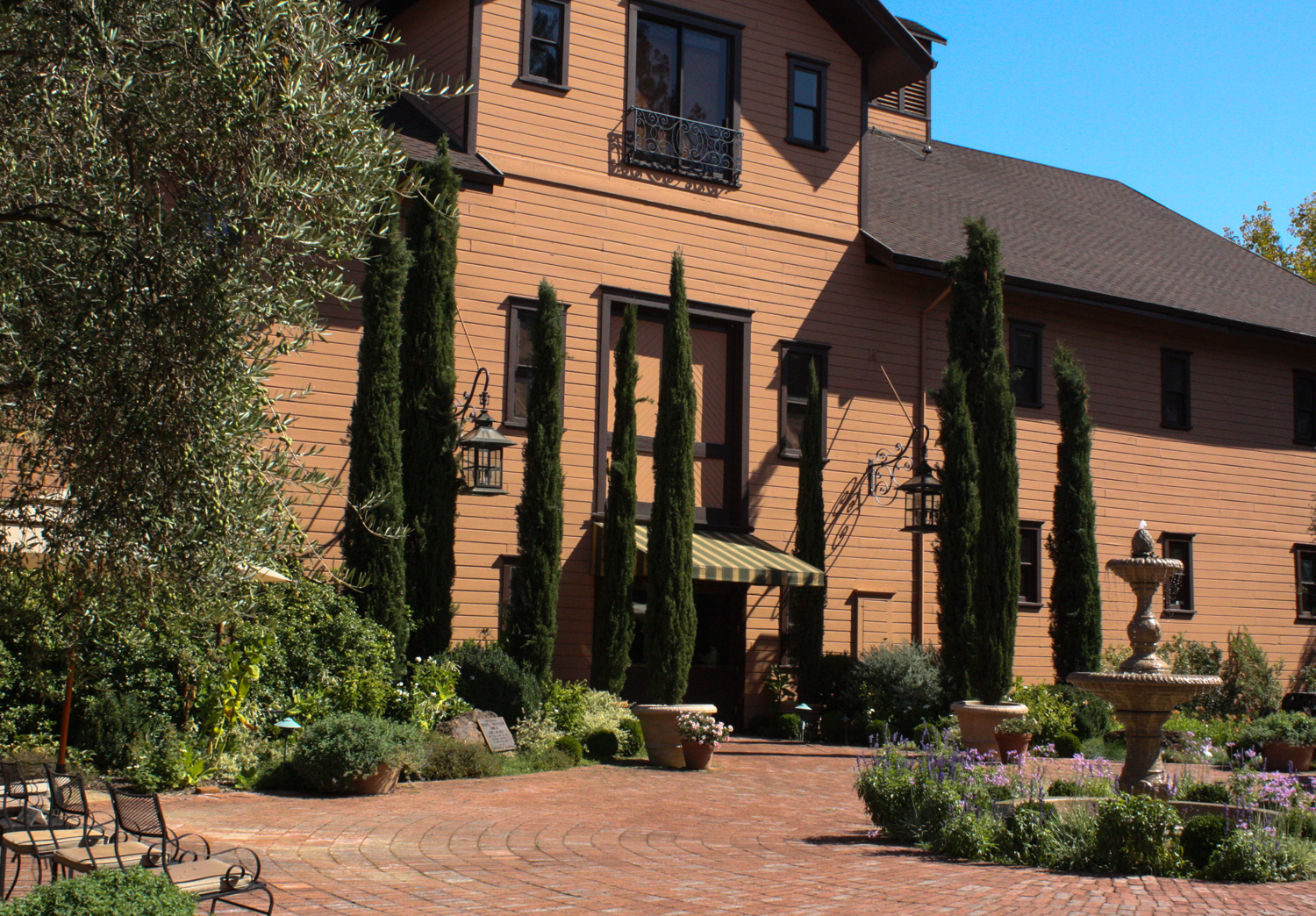
Here is where my wine knowledge fails. The options all tasted like very very good wine. Each wine had a description with at least 6 or 7 essences listed, from blackberries to coffee and chocolate. I could easily taste that each wine was different from the one before, but I can’t say that any was different in a more pleasurable way or that I detected a hint of coffee in anything. We did learn that 2005 was an excellent year for Cabernets, and I can assure you that the Trefethen 2005 Cabernet tasted different from the 2004 and 2006.

(Speaking of wines and their flavorings, does anyone know why wine would pick up the flavor of blackberries or coffee or chocolate? What does that mean exactly? I know scotches taste “grassy” or “manure-y” based on which grassy or manure-soaked farm they come from, and this makes sense to me. Do wines also reflect what is grown around them? How can this be when we only saw grapes for hundreds of acres in every direction?)
We had an hour to spend here, and we did not feel rushed at all. When you are ready, return to St. Helena Highway.
6. Tasting at Beaulieu Vineyard in Rutherford
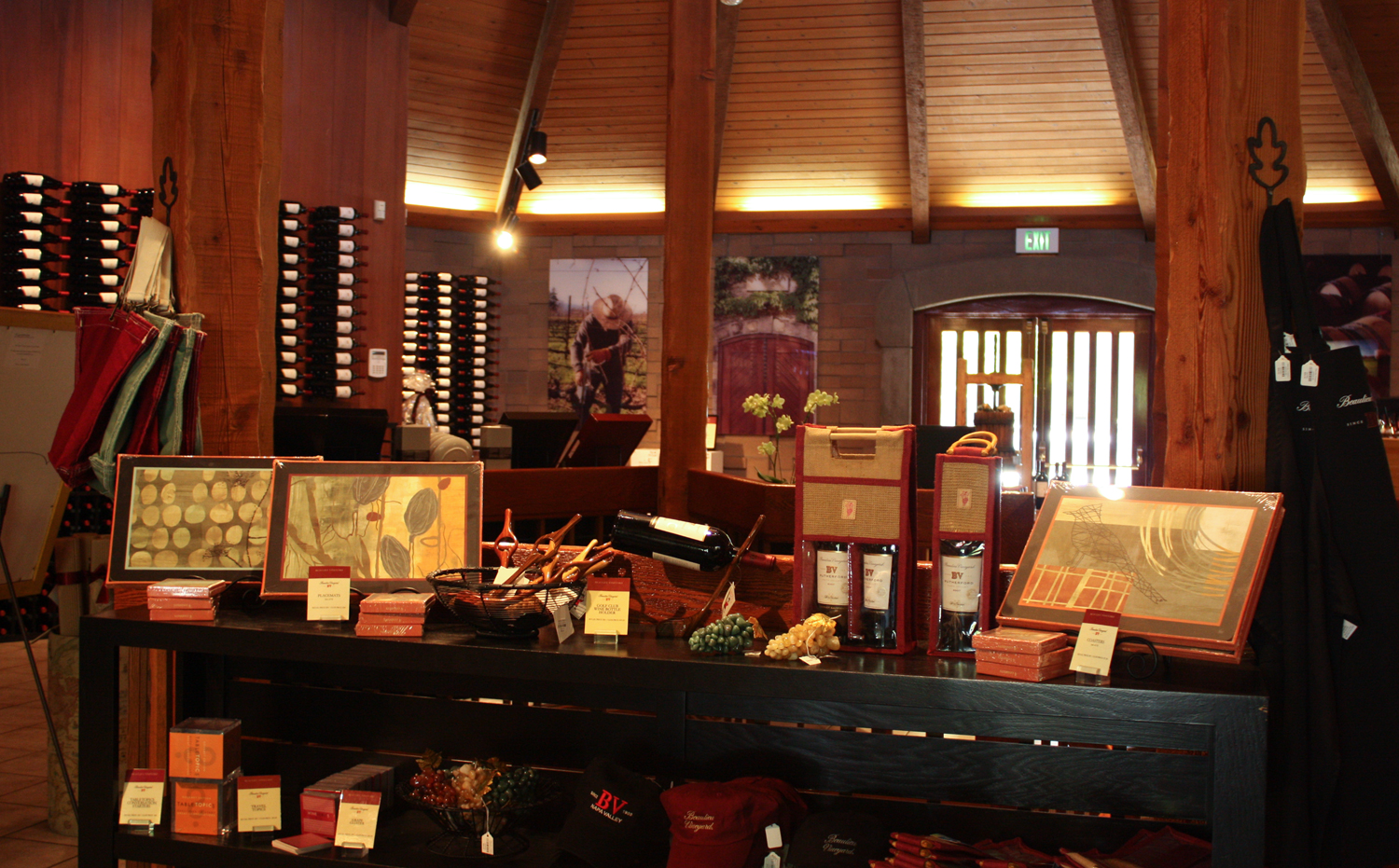
Take a right to continue driving north on St. Helena Highway. Beaulieu Vineyard will be 9 miles away, on your right. Its parking lot will be immediately after Rutherford Grill.
Beaulieu Vineyard has all the charm of an upscale shopping center in Long Island. The “vineyards” must exist somewhere, but they are not in view as you approach the tasting room, a wooden building that looks out on the back door of a restaurant. It is much more pleasant inside, if a bit too generic and commercial. The tasting staff came across as equally impersonal and formulaic, complete with a lot of hard selling – of the vineyard, of its (false) history, of their wine club. We assumed that this is what we could expect from a large producer, whose business involves much more than appealing to tourists milling around at tasting booths.
However, we were here for the wine. We again chose the Cabernet tasting, which was again slightly more expensive than the regular tasting. These turned out to be the most luscious, heavy, “chewy” wines of the day. Much of my teetotalism stems from the scene in Anne of Green Gables where Anne mistakenly gives Diana current wine, instead of raspberry cordial. My 10 year old imagination created an alcoholic beverage that was deeper in color and flavor than raspberry cordial, and was absolutely delicious. You can imagine my disappointment the first time I ever tried cheap, sour red wine.
The Beaulieu Cabernets, though, were the first wines I’ve ever tasted that compared to this childhood ideal. This is a compliment – they weren’t sweet, but they were hearty and complex and powerfully took over every taste bud. There was practically no after-bite and really no acidity at all.
I do want to clarify a bit about the history of Napa, since we were treated to conflicting histories at both vineyards that weren’t exactly “truthful.” Both assured us that Charles Krug built the first Napa Valley vineyard, in the early 1900s, with their respective vineyards being the second oldest. None of this is true. So, I bring you…
A bit on Napa Valley History
Napa’s history is much less reductive and much more collaborative than that, with the early winemakers working and consulting each other, even working on each other’s vineyards, in search of good California wine. Mr. Krug actually opened his vineyard in 1861, and even at that early date, it was not the first. Mr. Krug first collaborated with a Hungarian immigrant, Agoston Haraszthy, who purchased an already existing commercial vineyard in 1856 (so, he wasn’t the first either). There was also a John Patchett who began producing Napa Valley wine in 1858, and who also brought in Mr. Krug for consultations. From 1859 to 1861, Mr. Haraszthy travelled throughout Europe and shipped two hundred thousand vine cuttings (or, 1,400 grape varietals) back to California for cultivation, earning him the title of the Father of California Viticulture.
Mr. Krug’s vineyards still exist to some extent, as the Mondavi family purchased the Charles Krug Vineyard in the 1930s and sell wine under the Charles Krug name.
Of the vineyards we visit today, Trefethen’s vineyards date back to 1886, but the Trefethen family only purchased the property in 1968. The Trefethen family still owns it today, and as you saw, they still proudly cultivate all their own grapes. In 1988, the vineyard was placed on the National Register of Historic Places.
Beaulieu Vineyard’s original winery was built in 1885 and purchased in 1900 by Georges de Latour. It is now owned by a major international conglomerate that also owns Guiness, Smirnoff, Johnnie Walker, Jose Quervo, and Bailey’s.
To recap, no one was first, Agoston Haraszthy was key, John Patchett was also key, and Mr. Krug is the only one whose name is still slapped on a wine bottle.
[Edited to add: Thanks go @suedeshirtcalif, I just found out about Haraszthy Family Cellars, so Mr. Haraszthy’s name is also being slapped on a wine bottle these days. Mr. Haraszthy’s great great grandson operates the winery. Mr. Haraszthy’s original vineyard, Buena Vista Winery, also still exists, in Sonoma County. I still haven’t been able to trace the winery’s owners and history.]
After you have gotten your fill of Beaulieu’s offerings, it is time to head for the mountains.
7. Tasting at Smith-Madrone Vineyard on Spring Mountain

As you exit the Beaulieu Vineyard parking lot, take a right onto St. Helena Highway. You will soon be driving through the upscale part of Napa Valley – St. Helena. This is where the Dean & Deluca is, where the cute downtown with equally cute shops are. With the upscale shopping, you will also run into congestion. As you drive through downtown St. Helena, take a left onto Madrona Ave. In three blocks, turn left onto Spring Mountain Rd.
After a mile, you will be driving up into the mountains. This is where things get dicey. Smith-Madrone’s location isn’t accurately represented by either its street address or Google maps. Your turn off is 5.25 miles after you’ve made the turn onto Spring Mountain Rd. Yes, this is precise, and yes, you will likely miss your turn off (like we did) if you aren’t watching your odometer carefully. At the turn off, you will see a cluster of mailboxes, and hopefully, a wooden, hand written sign pointing the way to Smith-Madrone.
After the turn of, you will be driving on dirt roads, passing through hillsides of vineyards on each side. Veer right as you come to each fork in the road, following the ramshackle signs.
You will soon notice a cluster of trees in the middle of the dirt road, with what appears to be a wooden warehouse behind them. There will be no sign, or any other cars, but go along and park since this is your destination.
As we hesitantly approached the warehouse, unsure of our surroundings, a man approached barking out “can I help you?” Between the baseball cap and facial hair, he had roughly two square inches of weathered face showing. Like Dorothy, I stuttered that we had an appointment? For a wine tasting? And I hoped we weren’t intruding? We had an appointment…
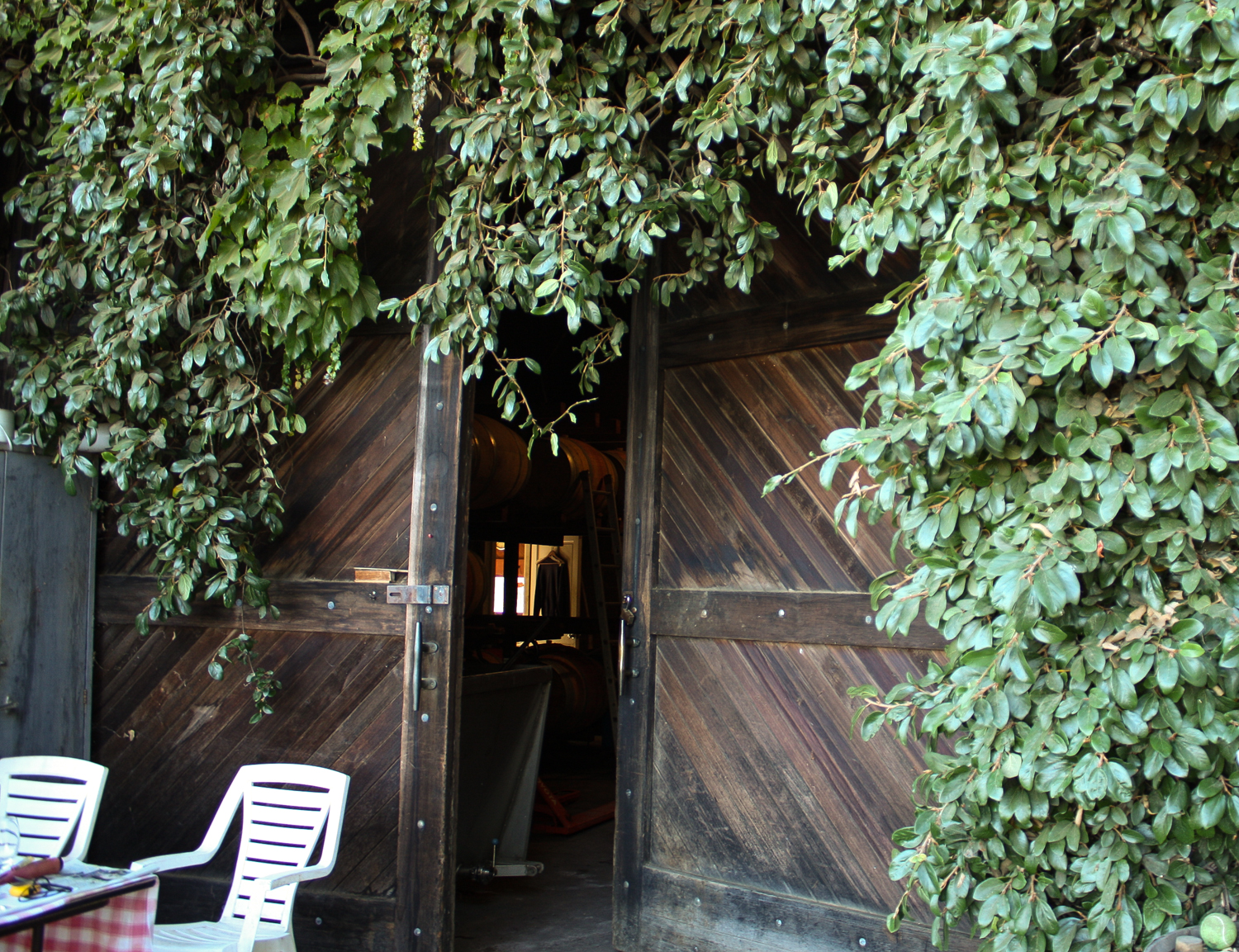
Charles ushered us into the warehouse/tasting room, which looks familiar in a your-dad’s-cluttered-tool-shed kind of way. He hunted around for a couple wine glasses, then gave us a taste of their Cabernet. It was more in line with the Cabernets we had tasted at Trefethen, not the Cabernet powerhouses we had tasted at Beaulieu. This distinction is one of the heated debates regarding modern Napa Cabernets – commercial versus “honest” Cabernets.
We didn’t get very far into our tasting at all, when Stuart Smith (the other brother, equally hirsute and tan) rushed in and yelled out that they needed to press NOW. Charles poured us glasses of wine and ushered us outside to witness the more industrial side of winemaking. The fields and hills were ablaze in the late day sun, and truckloads of Chardonnay grapes were waiting to be crushed before the brothers could go home for the day. As we tried to keep out of the way, Charles and Stuart darted between pieces of machinery, stopping to make sure we understood exactly what they were doing at every stage of the operation. It was absolutely fascinating.
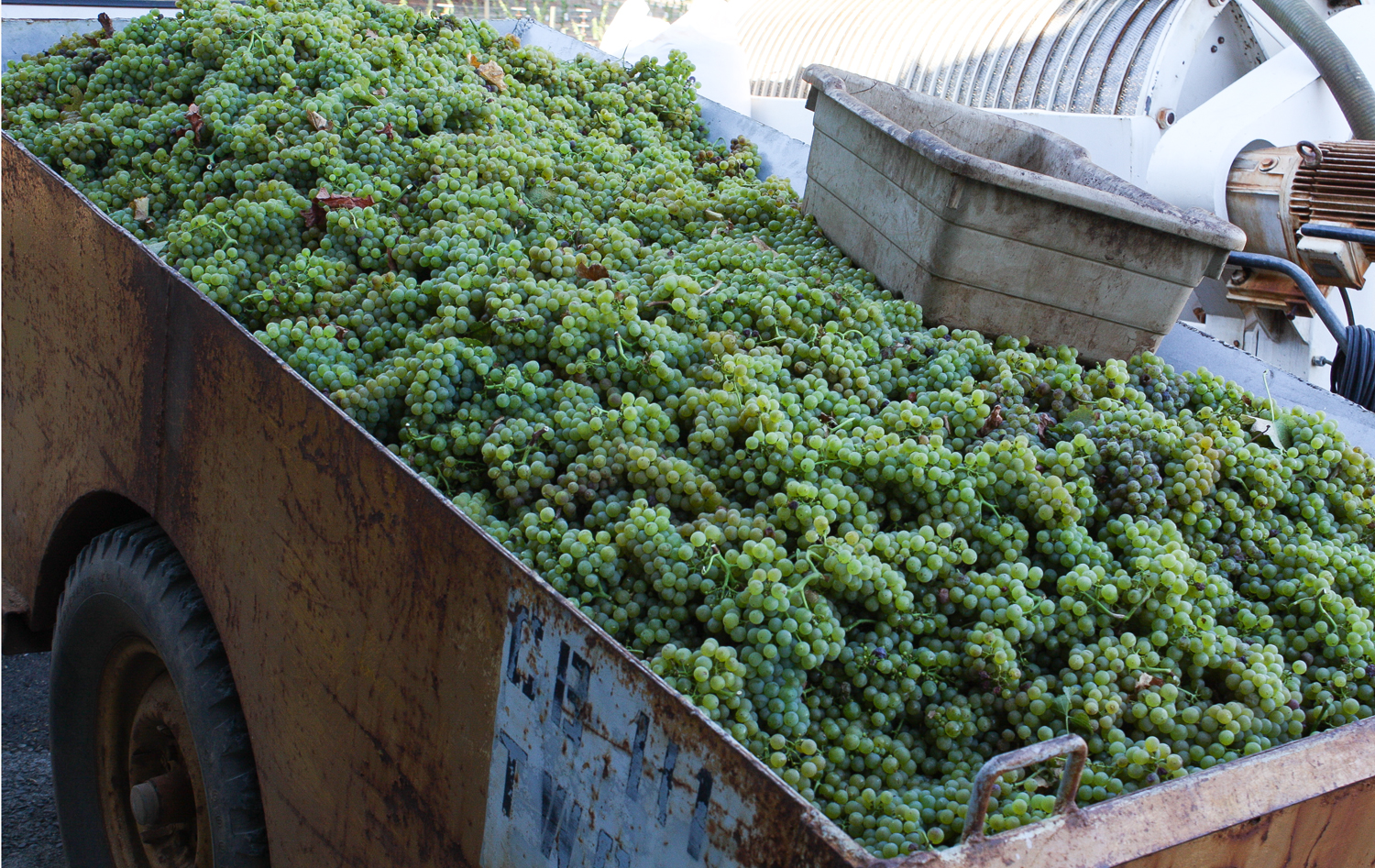
We ended up spending close to three hours shadowing them as they worked. Even more surprisingly, they seemed to be as interested in us as we were in them, making sure to answer each of our questions, asking us about our careers, and eventually hanging around to debate politics and our country’s future.
What can I say? This is the California that I hoped my friend would get to see. We were absolutely smitten.
When you are ready to leave, head back towards Spring Mountain Rd (veering left at the forks in the road.) It will take you roughly an hour to drive back to San Francisco. Once you get to Spring Mountain Rd, take a left and drive back down to St. Helena. In roughly 5 miles, take a left onto Madrona Ave. In three blocks, take a right onto St. Helena Highway. After passing Napa, follow signs for Route 29. Drive for 12 miles, and merge onto Route 37 East. In two miles, take the exit for I-80 West. Keep traveling on I-80 over the Bay Bridge (you will need to pay a toll) back into San Francisco.
Addendum
This day was supposed to end with a dinner at Lolo’s in the Mission District of San Francisco (to give our visitor a taste of California fusion). We were so exhausted, though, that we went home and devoured the cheeses, breads, and wines we had picked up over the previous days’ travels. If your group is game (and I commend your resilience), I would highly recommend Lolo’s – the food is delicious, the staff is welcoming, and Valencia St comes alive at night (as few neighborhoods do in San Francisco).
More reading:
Our Russian River Valley Pinot & Syrah Tasting Tour
A Trip to Sonoma’s Cowgirl Creamery and Point Reyes Tule Elk Reserve
All Your 2016 Bay Area Spring & Summer Art, Wine, and Music Festivals







Far Out City » San Francisco in 3 Days
[…] Day 3: Muir Woods and Napa Valley Tasting Tour […]
10/19/2010 at 10:12 pm
Our Russian River Valley Pinot / Syrah Tasting Tour | Far Out City
[…] most people who don’t know California very well, I instantly thought this meant another day trip to Napa – wine country. It turns out Pinot grows best in the cold, foggy Russian River Valley in Sonoma […]
5/6/2011 at 9:23 pm
2005 Smith Madrone Cabernet Sauvignon | Far Out City
[…] Muir Woods and a Napa Valley Tasting Tour […]
11/22/2011 at 3:40 pm
Laurie
Have been to Muir and Napa only once. Found the tasting tour tips very helpful and will use for my next visit.
1/13/2012 at 8:07 pm
Maria
We had such a fantastic day. Let me know how your next trip goes!
1/13/2012 at 8:16 pm
A Food Lover's Guide to Washington, DC -- Fine Dining | Far Out City
[…] Muir Woods and a Napa Valley Tasting Tour […]
3/13/2012 at 4:02 pm
Valerie
Great site thank you for the info
5/18/2014 at 4:37 pm
Loretta Hughbanks
Just browsing around and wanted to say hello
9/4/2016 at 1:42 pm
Maria
Hi! Thanks for reading!
9/4/2016 at 1:48 pm